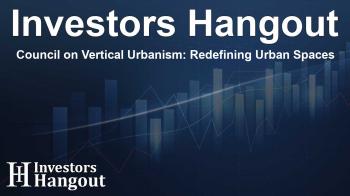Council on Vertical Urbanism: Redefining Urban Spaces

Transforming Urbanism: The Council on Vertical Urbanism
Recently, the Council on Tall Buildings and Urban Habitat, a leader in the skyscraper community, has rebranded itself to become the Council on Vertical Urbanism (CVU). This strategic transformation comes as society increasingly acknowledges vertical urbanism as not only a design philosophy but also a vital movement that addresses modern urban challenges.
Understanding Vertical Urbanism
Vertical urbanism extends beyond mere architectural designs of tall structures. It advocates for a smarter way of using urban space by considering the interconnectedness of buildings, infrastructure, and the environment. This approach is crucial as urban populations are expected to rise significantly, demanding innovative solutions to sustain growth without compromising the environment.
The Importance of Sustainable Design
Sustainability plays a central role in vertical urbanism. With vertical constructs, cities can preserve natural resources and minimize emissions while enhancing living conditions. This method integrates economic, social, and cultural elements to create urban ecosystems that are both efficient and pleasant for residents.
Real-World Applications of Vertical Urbanism
Practical examples of vertical urbanism are appearing around the globe. In vibrant urban centers, we can see integrated developments like the High Line in New York and diverse transport systems in Asia that demonstrate how interconnected spaces can lead to healthier cities. These projects exemplify the reality of vertical urbanism as local governments and planners embrace innovative designs.
A Broader Perspective on Urban Space
The CVU’s evolution recognizes that tall buildings are not mere structures but vital components of urban landscapes. Growth should not mean increasing outward but rather focusing on upward development that promotes community, ease of access, and environmental responsibility. Such a multifaceted approach helps cities adapt and thrive amidst the complexities of modern urban life.
The Council’s Vision for the Future
CVU’s mission is to lead the dialogue on improving urban living through density. This initiative fosters the creation of cities that are not only taller but also greener and more integrated. Their visionary perspective aims to utilize urban density as a catalyst for renewal, striking a balance that benefits all sectors of society.
Addressing Climate Challenges with Vertical Solutions
Climate change presents a pressing concern for urban areas worldwide. Reduction of carbon footprints, both operational and embedded, is essential to building resilience. The CVU is committed to sharing knowledge and connecting professionals across disciplines to implement effective density solutions in environments where growth is accelerating.
Final Thoughts on Vertical Urbanism's Role
The coming transformation for CVU will usher in new resources, such as updated branding and enhanced outreach materials. With a focus on engaged communities and innovative practices, the organization stands at the forefront of reshaping how we envision and create cities. This proactive approach seeks to inspire future developments that prioritize human-centered design within thoughtfully constructed spaces.
Frequently Asked Questions
What is the Council on Vertical Urbanism?
The Council on Vertical Urbanism (CVU) is a nonprofit organization dedicated to promoting tall buildings and sustainable urban density.
Why is vertical urbanism important today?
It addresses the challenges of urbanization by integrating sustainability, livability, and technology into city planning.
How does CVU influence urban design?
CVU provides frameworks and shares knowledge to encourage innovative and integrated approaches to urban development.
What are some examples of vertical urbanism?
Notable examples include projects like the High Line in New York and rooftop gardens in various cities worldwide.
How can communities get involved with CVU?
Communities can participate through advocacy, collaboration on projects, and by adopting CVU’s principles in local planning efforts.
About The Author
Contact Logan Wright privately here. Or send an email with ATTN: Logan Wright as the subject to contact@investorshangout.com.
About Investors Hangout
Investors Hangout is a leading online stock forum for financial discussion and learning, offering a wide range of free tools and resources. It draws in traders of all levels, who exchange market knowledge, investigate trading tactics, and keep an eye on industry developments in real time. Featuring financial articles, stock message boards, quotes, charts, company profiles, and live news updates. Through cooperative learning and a wealth of informational resources, it helps users from novices creating their first portfolios to experts honing their techniques. Join Investors Hangout today: https://investorshangout.com/
The content of this article is based on factual, publicly available information and does not represent legal, financial, or investment advice. Investors Hangout does not offer financial advice, and the author is not a licensed financial advisor. Consult a qualified advisor before making any financial or investment decisions based on this article. This article should not be considered advice to purchase, sell, or hold any securities or other investments. If any of the material provided here is inaccurate, please contact us for corrections.

